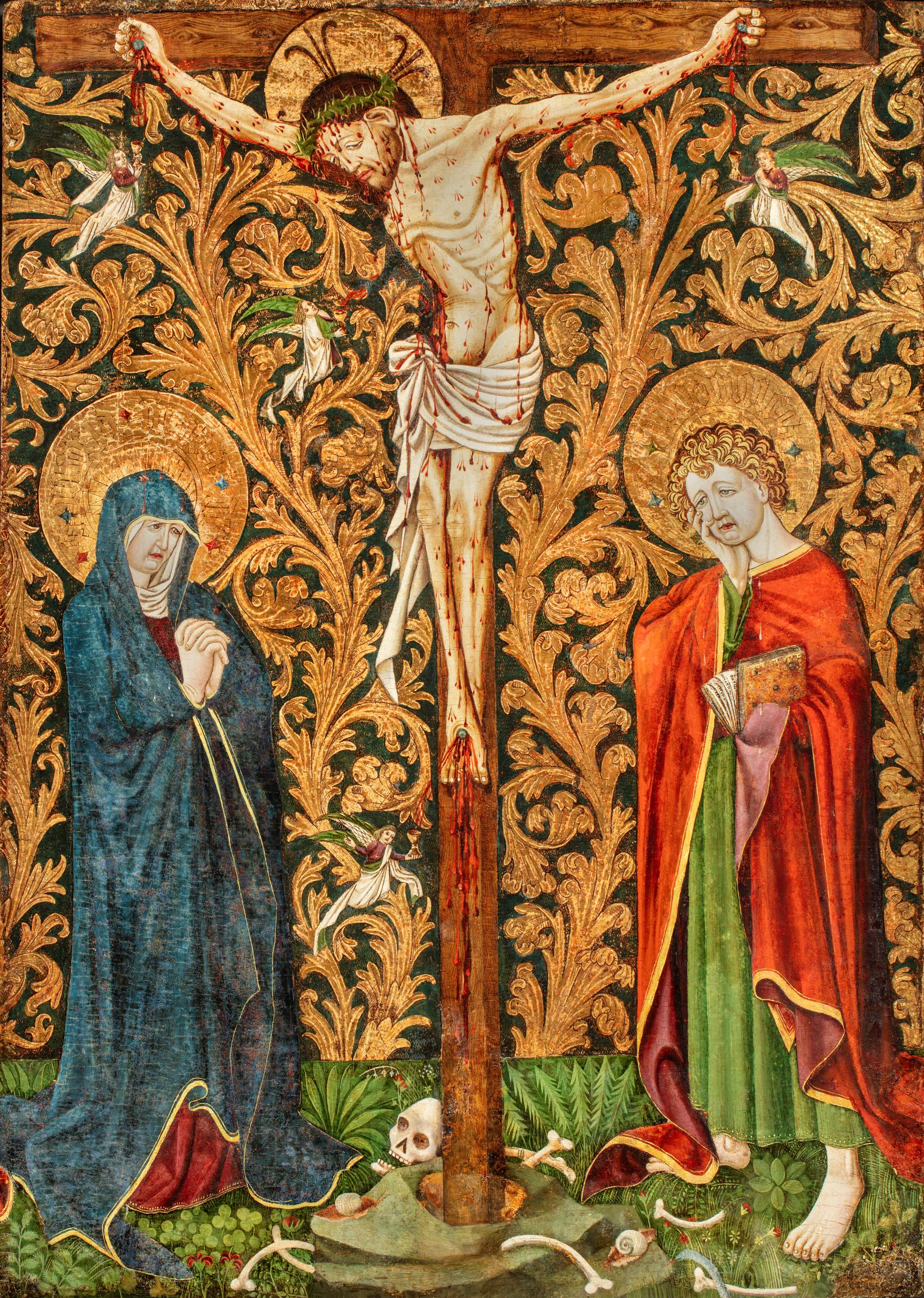Category
Small Project Grant
Start
2022
Status
Active
The Crucifixion of the Lindau Master (panel painting, early 15C, Museum Catharijneconvent) was in a bad condition for decades. Cleaning and provisional restoration treatments revealed that the work’s currently visible azurite layer is obscuring a golden background. This leads to the question whether this blue layer should be irreversibly removed as it is not part of the original appearance, or if it should be maintained as a part of the panel’s history. In an aim to overcome this dilemma, we approach this problem interdisciplinarily by combining the knowledge of art historians, restorers, by integrating modern 3D technologies and by investigating the possible impact of a restoration on the perception of the viewer using eye-tracking research.
In an earlier stage of this project, a modifiable digital model has been created based on 3D recordings of the painting’s topography and colours (Factum Foundation). This digitized version of the painting has been restored virtually to the previous condition with the golden background, using A.I. software. We intend to use this digital model to 3D print two facsimiles: a copy of the current state, and the virtually restored version with the golden background. By visualizing the possible end-result of the restoration, these prints will support the discussion on the restoration of the background of the Lindau painting. Is an irreversible restoration still needed when the proposed end result, albeit through a reproduction, is already available? They will also allow us to investigate the changes of the restoration on the perception of the artwork. An eye tracking experiment, where the eyes of the viewer are recorded with a mobile eye-tracker (Tobii glasses) and their thoughts are verbalized with a think-aloud method, will be conducted to analyze the differences in the viewing experience of the visitor of the two versions of the artwork in two different lighting conditions (a stable and an unstable light source).

The Crucifixion, Master of the Lamentation of Christ in Lindau, c. 1425. Utrecht, Museum Catharijneconvent, ABM s34